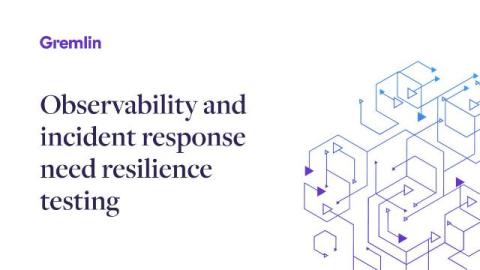Observability and incident response need resilience testing
There’s a reason why observability and incident response practices have become standard across modern software development. Anyone wanting to minimize downtime and deliver reliable, available applications needs to have fully instrumented systems and playbooks so they can respond quickly and effectively to outages or incidents. But there’s another piece to the reliability puzzle: resilience testing.











